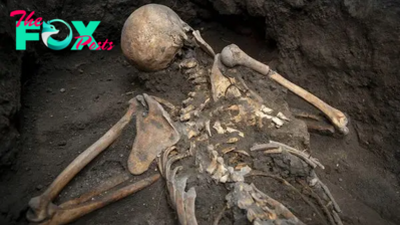Archaeology
Why did the Maya civilization collapse?
The Maya have lived in Central America and the Yucatán Peninsula since at least 1800 B.C. and flourished in the region for thousands of years. According to countless studies, the Maya civilization collapsed between A.D. 800 and 1000. But though the term "Maya collapse" brings up images of ruins overgrown with forests and of an ancient civilization whose cities fell and were abandoned, the reality is far more complex.
So, why did the Maya civilization collapse, and can you even call it a "collapse"?
For starters, the Maya are still here today. "It was the Maya political system that collapsed, not [their] society," Lisa Lucero, professor of anthropology and medieval studies at the University of Illinois at Urbana-Champaign, told Live Science in an email. "The over 7 million Maya living today in Central America and beyond attest to this fact."
Related: Did the Maya really sacrifice their ballgame players?
The ancient Maya didn't have one central leader, like an emperor in ancient Rome, and were not unified into a single state. Instead, the ancient Maya civilization consisted of numerous small states, each centered around a city. While these city states shared similarities in culture and religion, they each had their own local leaders, some more powerful than others. There was no single collapse for these polities; rather, a number of Maya cities rose and fell at different times, some within that 800 to 1000 time period, and some afterward, according to scholars. For example, while areas in southern Mesoamerica, such as Tikal in what is now Guatemala, declined in the eighth and ninth centuries due to environmental problems and political turmoil, populations rose in other areas, such as Chichén Itzá, on what is now the Mexican Yucatán Peninsula, scholars said.
"Collapse is not a term that should be universally applied to 'the' Maya, who should not be referred to as a single term either," Marilyn Masson, a professor and chair of anthropology at the University at Albany, State University of New York, told Live Science in an email. "The Maya region was large, with many polities and environments, and multiple languages were spoken in the Maya family."
When Chichén Itzá declined, largely because of a lengthy drought during the 11th century, another Yucatán Peninsula city, called Mayapán, started to thrive. "Mayapan had lords, priests, hundreds of religious hieroglyphic books, complex astronomy and a pantheon of deities," Masson said. "Much of what we know about earlier Maya religion comes from books written in Mayapan's day and from descendant populations who met and survived European contact."
-

 Archaeology2d ago
Archaeology2d agoPompeii victims died in 'extreme agony,' 2 newfound skeletons reveal
-

 Archaeology2d ago
Archaeology2d agoMassive medieval coin hoard worth 'about 150 sheep' discovered in Germany's Black Forest
-

 Archaeology3d ago
Archaeology3d ago3,000-year-old goddess figurine found in an Italian lake still bears the handprints of its maker
-

 Archaeology3d ago
Archaeology3d agoRare Roman-era silver ingots depicting Constantine the Great seized from alleged black-market sale
-

 Archaeology3d ago
Archaeology3d agoStonehenge's 13,200-pound Altar Stone originated in northeastern Scotland, more than 450 miles away
-

 Archaeology4d ago
Archaeology4d agoUnraveling Mysteries: Decoding Ancient Petroglyphs and Cave Paintings of ‘Ancient Aliens’.lamz
-

 Archaeology5d ago
Archaeology5d agoMatthijs De Ligt and Noussair Mazraoui arrive at Munich Airport ahead of completing their signings to Manchester United, as Red Devils prepare for a £70M double swoop for defenders.criss
-

 Archaeology5d ago
Archaeology5d agoBend down and tremblingly pick it up. It was the 63-year-old man’s final work when he discovered a 350-pound ancient vase containing 52,000 Roman coins in a field dating from the 3rd century AD.hanh



















